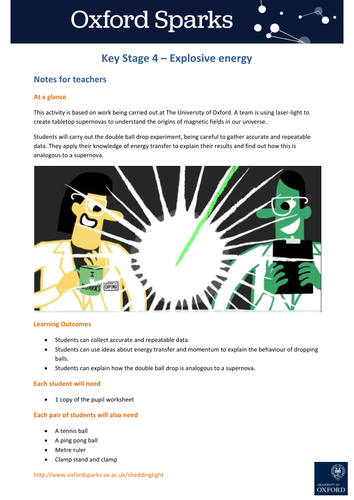




Light is more than just light bulbs and sunshine. Researchers can use different types of light to investigate and do a range of things. This activity is based on work being carried out at the University of Oxford. A team is using laser-light to create table-top supernovas to understand the origins of magnetic fields in our universe.
Students will carry out the double ball drop experiment, being careful to gather accurate and repeatable data. They apply their knowledge of energy transfer to explain their results and find out how this is analogous to a supernova.
Learning outcomes: 1) Collect accurate and repeatable data; 2) Use ideas about energy transfer and momentum to explain the behaviour of dropping balls; 3) Explain how the double ball drop is analogous to a supernova.
See more at: http://www.oxfordsparks.ox.ac.uk/content/shedding-light-situation
Students will carry out the double ball drop experiment, being careful to gather accurate and repeatable data. They apply their knowledge of energy transfer to explain their results and find out how this is analogous to a supernova.
Learning outcomes: 1) Collect accurate and repeatable data; 2) Use ideas about energy transfer and momentum to explain the behaviour of dropping balls; 3) Explain how the double ball drop is analogous to a supernova.
See more at: http://www.oxfordsparks.ox.ac.uk/content/shedding-light-situation
Something went wrong, please try again later.
This resource hasn't been reviewed yet
To ensure quality for our reviews, only customers who have downloaded this resource can review it
Report this resourceto let us know if it violates our terms and conditions.
Our customer service team will review your report and will be in touch.
£0.00
